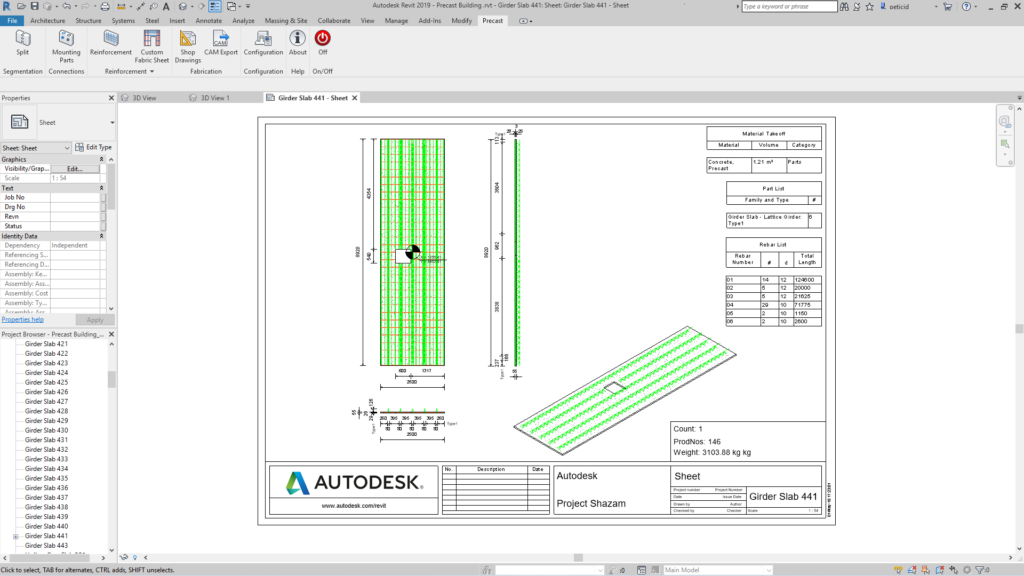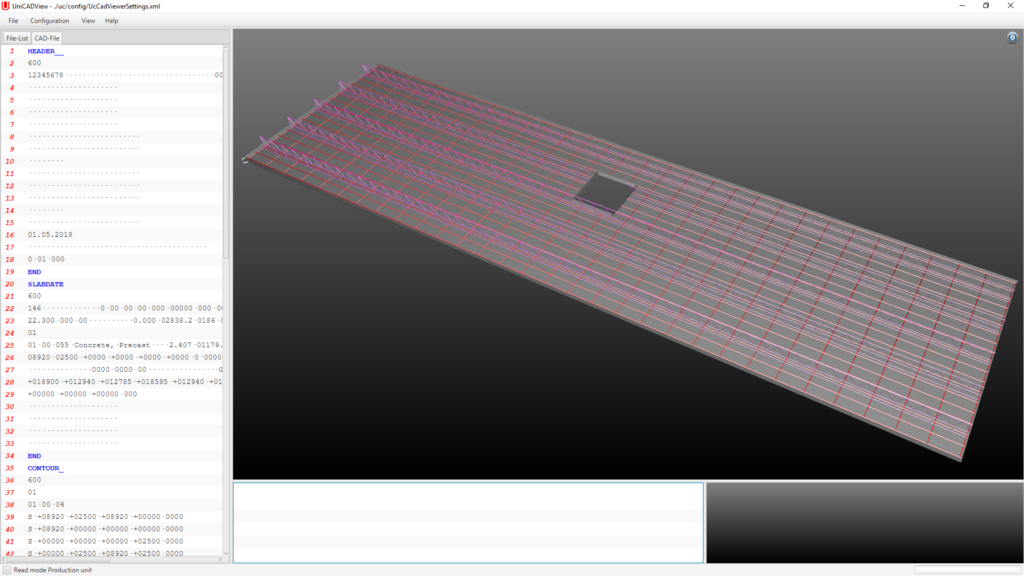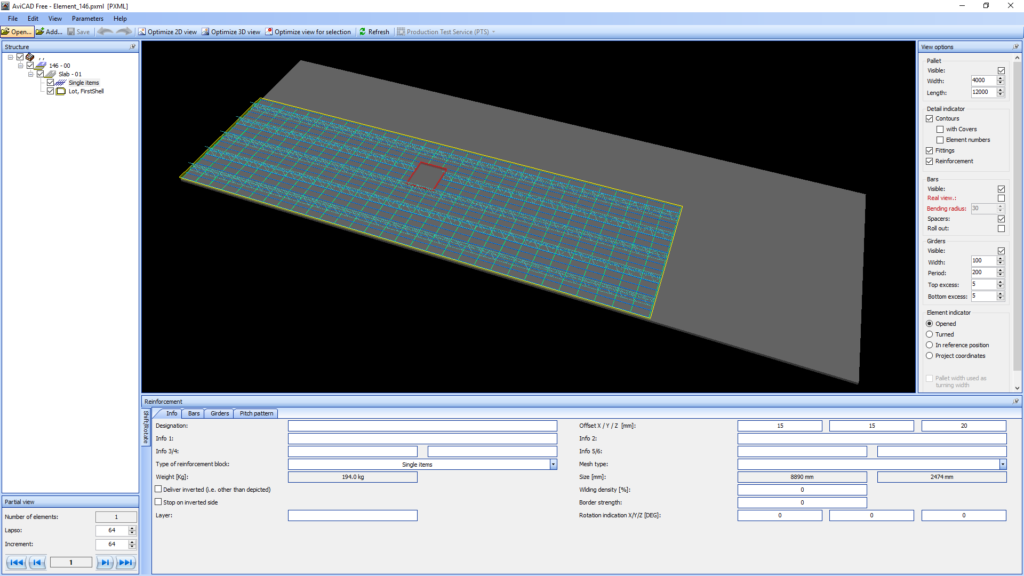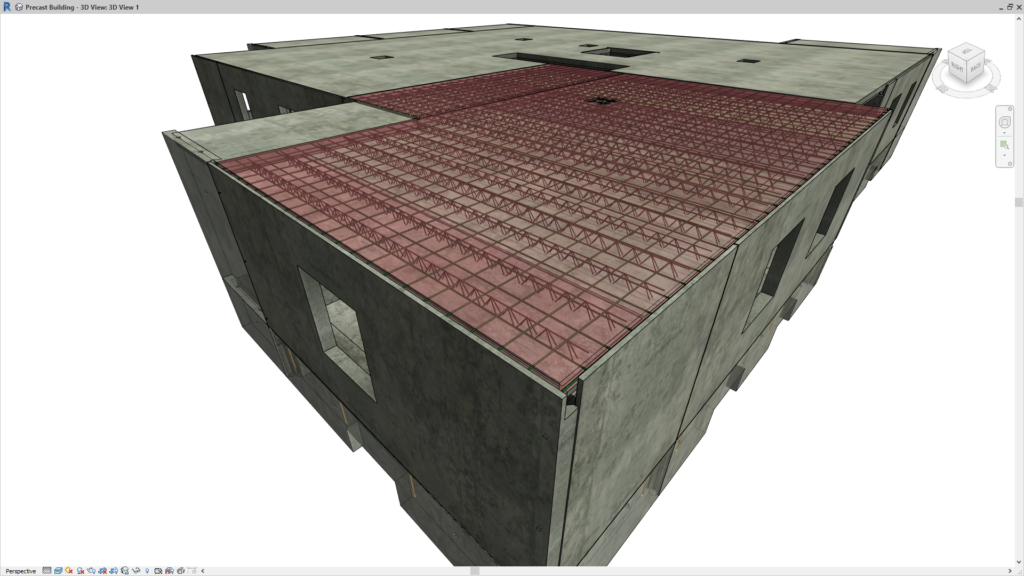& Construction

Integrated BIM tools, including Revit, AutoCAD, and Civil 3D
& Manufacturing

Professional CAD/CAM tools built on Inventor and AutoCAD
5 min read
The Autodesk Structural Precast Extension for Revit 2019 is now available, delivering even more automation of structural precast modelling-to-fabrication workflows.
Automation has three major benefits:

First, we have the Precast lattice girder slabs which are one of the most frequently used types of precast elements used in precast projects. Lattice girder slabs follow the same logic as the existing precast elements delivered by the app in order to drive automatic segmentation, reinforcement and documentation. The documentation and fabrication instructions of each element can consist of shop drawing, based on predefined customizable templates, and of files, in Unitechnik and PXML file formats.

Automatic shop drawing sample for a precast girder slab.

Precast lattice girder slab checked for production using Unitechnik UniCADView software, based on a Unitechnik file.

Precast lattice girder slab checked for production using Progress Machinen & Automation AviCAD software, based on a PXML file.
This new version of the Precast for Revit app now allows precast projects using lattice girder slabs to benefit from –in addition to the automation the app delivers — all of the advantages of the Revit platform. Multi-disciplinary coordination is one such important action and the easiest way to imagine this related to the lattice girder slabs is the automatic addition of all MEP embeds, like sockets, in the corresponding precast assemblies. This means clashes are avoided during the design and detailing process and the fabrication process will be less prone to errors, given that all the pieces are automatically included in the bills of materials and in the CAM files.
Another advantage delivered by Revit as a platform is the ability to look at the model considering the persona and the level of detail that is required. One key driving factor for this is the Parts, which also prove to be important when we think that the precast lattice slabs are actually made of two concrete layers, one that is the precast layer and another representing the cast-in-place concrete, connecting the precast elements altogether. The Parts of Revit fulfill exactly this role, making it easy for all personas working on the project to find out what is relevant to them. Structural engineers can work with the total thickness of the slab to perform the overall structural analysis of the building in its final state and work with the precast slab height only for checking the building for temporary states during the construction process. The structural detailers can also choose which parts to work with when placing the reinforcement for the precast elements and when modelling for the cast in place layer. Architects and MEP engineers can also leverage the parts to coordinate the overall design and to determine which embeds will need to go in the precast elements– requiring factory installation– and which need to go in the cast-in-place elements which need to be delivered on time at the site. Even the general contractor may use information facilitated by parts, for example to determine the volume of concrete that needs to be poured on site.

Parts: One single source of truth, multiple perspectives
The other high value feature delivered along with Precast for Revit 2019 is the API for precast automation, dedicated specifically to bespoke workflows that companies working on precast projects might require. We have prioritized this because we understand that everyone needs more than just tools for automating the precast workflow, they need a platform that is scalable and customizable to accommodate all the factory or regional specific details. To dive into the details, the precast dedicated API has components that facilitate the following operations:
Autodesk is also working with technology providers like PTAC, IDAT and AGACAD to leverage this new API in a greater way. These teams already provide precast detailing apps for Revit that can be customized per firm or factory. Therefore, you can look forward to them delivering even more customized precast solutions that fully leverage this precast technology delivered by Autodesk.
The new version of the app is available via the Autodesk Desktop App* and works on top of Revit 2019.
This new release is proof that automation is here to stay, driving precast projects to faster, better optimized and coordinated deliveries. As always, your impressions are very welcome, so please let us know your thoughts after testing it.
* The app is available to Maintenance plan customers, Single-user and Multi-user subscription customers of the following products, suites and collections: Autodesk Revit, the Autodesk Architecture, Engineering, and Construction Collection, Autodesk Structural Fabrication Suite, Autodesk MEP Fabrication Suite, Autodesk Building Design Suite Ultimate, Autodesk Building Design Suite Premium, Autodesk Infrastructure Design Suite Ultimate, Autodesk Infrastructure Design Suite Premium
By clicking subscribe, I agree to receive the AEC newsletter and acknowledge the Autodesk Privacy Statement.
Success!
May we collect and use your data?
Learn more about the Third Party Services we use and our Privacy Statement.May we collect and use your data to tailor your experience?
Explore the benefits of a customized experience by managing your privacy settings for this site or visit our Privacy Statement to learn more about your options.